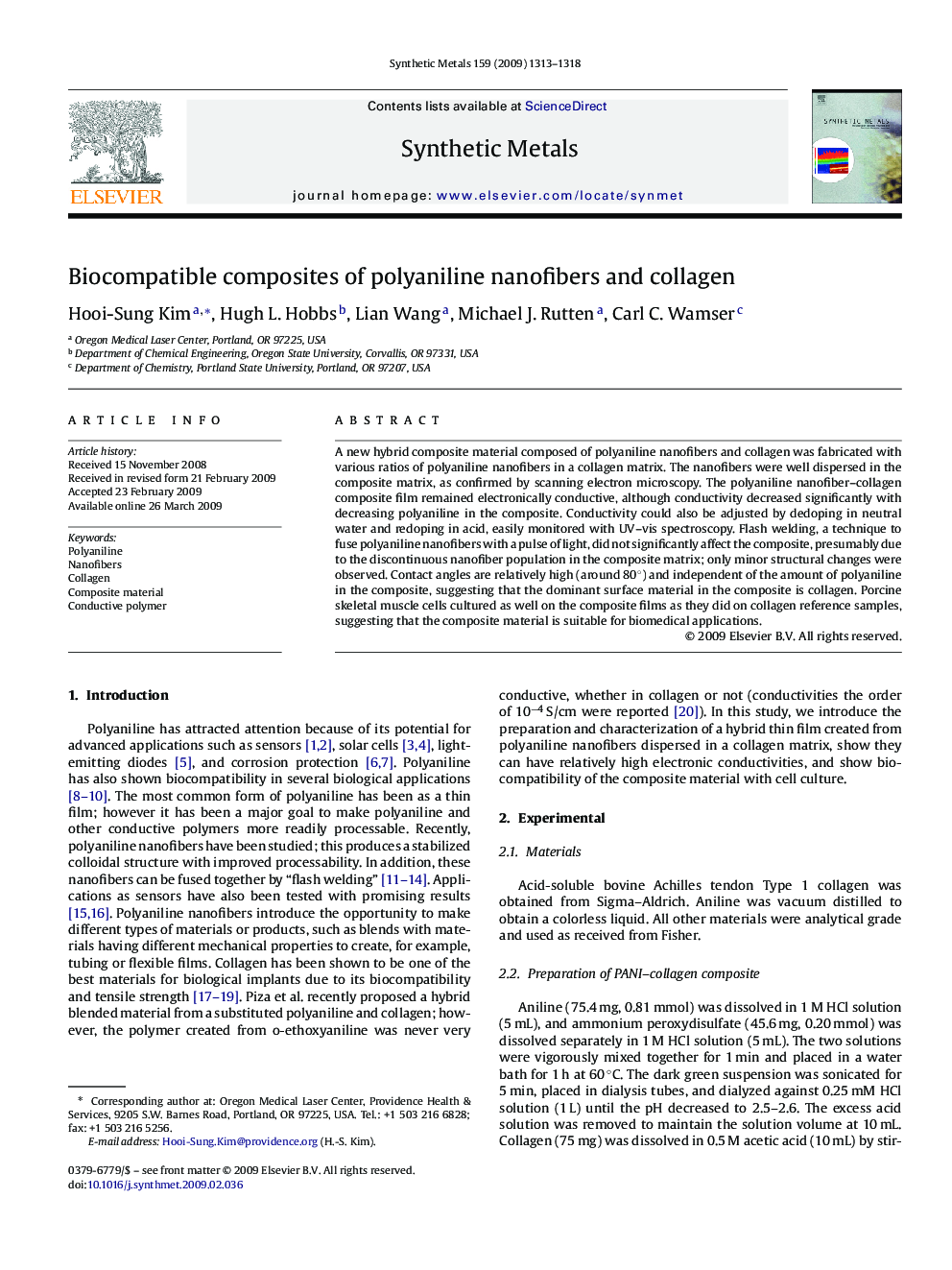| Article ID | Journal | Published Year | Pages | File Type |
|---|---|---|---|---|
| 1443120 | Synthetic Metals | 2009 | 6 Pages |
A new hybrid composite material composed of polyaniline nanofibers and collagen was fabricated with various ratios of polyaniline nanofibers in a collagen matrix. The nanofibers were well dispersed in the composite matrix, as confirmed by scanning electron microscopy. The polyaniline nanofiber–collagen composite film remained electronically conductive, although conductivity decreased significantly with decreasing polyaniline in the composite. Conductivity could also be adjusted by dedoping in neutral water and redoping in acid, easily monitored with UV–vis spectroscopy. Flash welding, a technique to fuse polyaniline nanofibers with a pulse of light, did not significantly affect the composite, presumably due to the discontinuous nanofiber population in the composite matrix; only minor structural changes were observed. Contact angles are relatively high (around 80°) and independent of the amount of polyaniline in the composite, suggesting that the dominant surface material in the composite is collagen. Porcine skeletal muscle cells cultured as well on the composite films as they did on collagen reference samples, suggesting that the composite material is suitable for biomedical applications.
